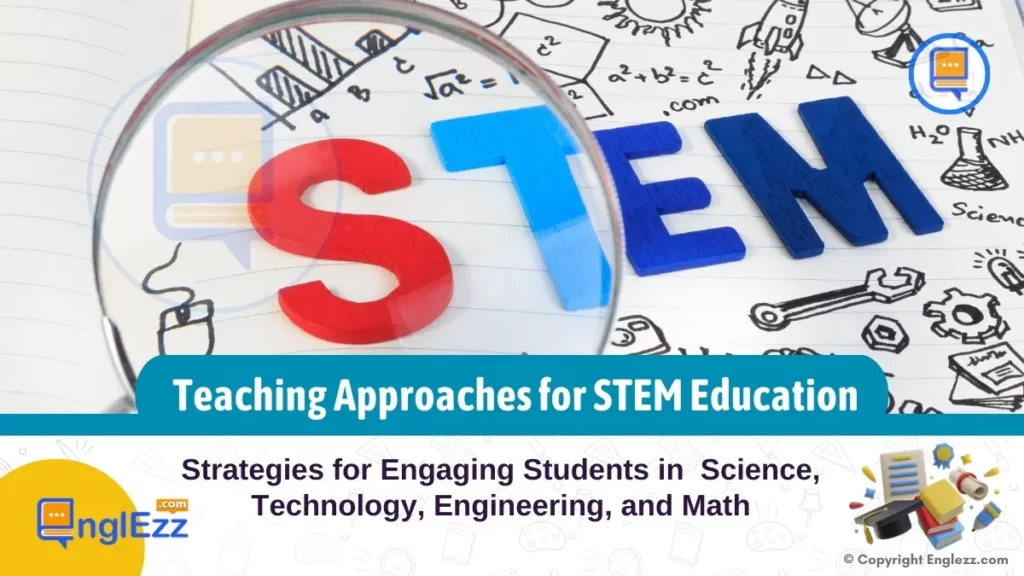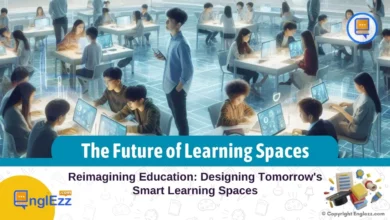STEM (Science, Technology, Engineering, and Math) education is an essential part of modern-day learning. It is vital for our children to learn these subjects as they will form the basis of future innovation. However, getting students engaged in STEM subjects can be challenging. To unlock the STEM code, educators must employ various strategies to help students understand and appreciate these subjects. In this post, we will discuss some effective ways to engage students in STEM learning.
Table of Contents
- Teaching Approaches for STEM Education: Strategies for Engaging Students in Science, Technology, Engineering, and Math
- The importance of STEM education in today’s world
- Common challenges in engaging students in STEM subjects
- Understanding the different learning styles in STEM education
- Strategies for making science engaging and interactive
- Innovative approaches to teaching technology skills
- Hands-on activities to foster engineering curiosity
- Making math meaningful and relatable to students
- Incorporating real-world applications into STEM lessons
- Promoting collaboration and problem-solving skills in STEM classrooms
- The role of teachers and parents in fostering a love for STEM
Teaching Approaches for STEM Education: Strategies for Engaging Students in Science, Technology, Engineering, and Math
From hands-on activities and project-based learning to use of technology and real-world applications, we’ll explore strategies that can make STEM learning more exciting and accessible for students of all ages. Join us as we explore these strategies and help unlock the STEM code for the next generation of innovators!
The importance of STEM education in today’s world
In today’s rapidly evolving world, STEM education plays a crucial role in preparing students for the future. STEM, an acronym for Science, Technology, Engineering, and Math, encompasses a wide range of disciplines that are deeply intertwined with various aspects of our daily lives.
The importance of STEM education lies in its ability to equip students with the necessary knowledge and skills to navigate an increasingly complex and technology-driven society. Through STEM education, students learn to think critically, solve problems, and analyze data using a systematic and logical approach.

One of the key reasons why STEM education is so vital is its direct correlation to the job market. The demand for STEM professionals is growing at an unprecedented rate, and it is projected to continue expanding in the coming years. By exposing students to STEM subjects at an early age, we are enabling them to explore potential career paths and cultivate the skills required to succeed in these fields.
Moreover, STEM education fosters innovation and creativity. It encourages students to think outside the box, explore new possibilities, and develop unique solutions to real-world problems. Through hands-on activities, experiments, and projects, students are encouraged to embrace trial and error, learn from their mistakes, and persist in the face of challenges.
Another aspect of STEM education’s importance is its role in promoting diversity and inclusion. Historically, there has been a lack of representation from underrepresented groups in STEM fields. By advocating for equal access to STEM education and creating inclusive learning environments, we can bridge this gap and empower students from all backgrounds to pursue their passions and contribute to the advancement of science and technology.
In conclusion, the significance of STEM education cannot be overstated. It equips students with crucial skills, prepares them for future careers, fosters innovation, and promotes diversity. By embracing and investing in STEM education, we are unlocking the potential of our students and paving the way for a brighter and more technologically advanced future.
Common challenges in engaging students in STEM subjects
Engaging students in STEM subjects can be a challenging endeavor. Many students perceive science, technology, engineering, and math as difficult or intimidating fields. As a result, they may lack interest or motivation to actively participate in STEM-related activities or pursue careers in these fields. Understanding the common challenges in engaging students in STEM subjects is crucial for educators and parents alike.
One of the main challenges is the perception that STEM subjects are boring or irrelevant to students’ everyday lives. Students often struggle to see the practical applications of these subjects and fail to understand their real-world significance. To overcome this challenge, educators must emphasize the relevance and practicality of STEM knowledge in various contexts. This can be achieved by incorporating hands-on experiments, real-life examples, and interactive projects that demonstrate how STEM concepts are used in solving everyday problems.
Another challenge is the lack of diversity and representation in STEM fields. Historically, certain groups, such as women and underrepresented minorities, have been underrepresented in STEM-related careers. This lack of diversity can lead to feelings of exclusion and disinterest among students who do not see themselves reflected in these fields. It is essential to promote diversity and inclusivity in STEM education by showcasing successful role models from various backgrounds and highlighting the contributions of diverse individuals in STEM fields.
Additionally, the fast-paced nature of technological advancements poses a challenge in engaging students in STEM subjects. With rapidly evolving technologies, it can be overwhelming for both educators and students to keep up with the latest developments. To address this challenge, educators should focus on developing critical thinking skills and problem-solving abilities rather than solely focusing on specific technologies. By nurturing a growth mindset and encouraging curiosity, students can feel empowered to adapt to new technologies and embrace lifelong learning in STEM.
Lastly, limited resources and access to STEM opportunities can hinder student engagement. Not all schools have well-equipped laboratories or access to cutting-edge technology. However, educators can overcome this challenge by seeking alternative resources, such as online simulations, virtual experiments, or partnerships with local industries and organizations. Engaging with the community and leveraging outside resources can provide students with valuable hands-on experiences, even in resource-constrained environments.
By acknowledging and addressing these common challenges, educators and parents can unlock the code to engaging students in STEM subjects. By fostering relevance, promoting diversity, nurturing a growth mindset, and seeking alternative resources, we can inspire the next generation of innovators, problem-solvers, and leaders in science, technology, engineering, and math.
Understanding the different learning styles in STEM education
In the realm of STEM education, it is crucial to understand that students have different learning styles that influence their ability to grasp and engage with the subject matter. Recognizing and catering to these diverse learning styles can significantly enhance the effectiveness of teaching and learning in science, technology, engineering, and math.
Firstly, there are visual learners who thrive on images, charts, and diagrams. These students often benefit from visual aids that help them visualize abstract concepts. Incorporating colorful infographics, interactive simulations, and engaging videos can capture their attention and facilitate better comprehension.
On the other hand, auditory learners prefer to absorb information through listening and speaking. These students may benefit from lectures, discussions, and oral presentations. Incorporating audio recordings, podcasts, and group discussions can create an environment where these students can actively participate and excel.
Furthermore, kinesthetic learners have a preference for hands-on experiences and physical activities. For these students, incorporating experiments, interactive projects, and practical applications is essential. Allowing them to manipulate materials, build prototypes, and engage in collaborative problem-solving activities can enhance their understanding and retention of STEM concepts.
Lastly, there are tactile learners who learn best through touch and physical sensations. Providing them with opportunities to engage in tactile experiences such as using manipulatives, conducting experiments, and participating in interactive simulations can greatly enhance their learning experience.
By acknowledging and addressing these different learning styles, educators can create a well-rounded and inclusive STEM curriculum. Incorporating a variety of instructional strategies and materials ensures that students with different preferences can actively engage with the subject matter, fostering a deeper understanding and a lifelong passion for science, technology, engineering, and math.
Strategies for making science engaging and interactive
Science education plays a crucial role in preparing students for the rapidly evolving world of technology and innovation. However, many students find science to be challenging, intimidating, and at times, boring. As educators and parents, it is our responsibility to unlock the STEM code and make science engaging and interactive for students.
One effective strategy is to incorporate hands-on experiments and demonstrations into the curriculum. Science is best learned through active participation, allowing students to observe, investigate, and draw conclusions on their own. By providing students with opportunities to conduct experiments, manipulate materials, and make predictions, we can ignite their curiosity and foster a deeper understanding of scientific concepts.
Another way to make science engaging is through the use of technology. With the rise of digital tools and resources, educators can leverage these advancements to create interactive learning experiences. Virtual simulations, online experiments, and interactive apps can bring abstract scientific concepts to life, allowing students to explore and experiment in a virtual laboratory. By incorporating technology into science education, we can bridge the gap between theory and practical application, making it more relatable and engaging for students.
Furthermore, connecting science to real-world applications can greatly enhance student engagement. By demonstrating how scientific principles are relevant in everyday life and various industries, students can see the practicality and importance of science. Field trips, guest speakers, and industry partnerships can provide firsthand experiences and insights, allowing students to witness science in action and understand its impact on society.
Lastly, fostering a collaborative and inquiry-based learning environment is crucial for engaging students in science. Encouraging students to work in teams, ask questions, and explore their own interests can empower them to take ownership of their learning. By facilitating discussions, debates, and group projects, educators can create a dynamic and interactive classroom where students actively participate and learn from one another.
In conclusion, making science engaging and interactive requires a multifaceted approach. By incorporating hands-on experiments, leveraging technology, connecting science to real-world applications, and fostering collaboration, we can unlock the STEM code and ignite a passion for science in our students. Through these strategies, we can empower the next generation of innovators, problem solvers, and critical thinkers who will shape the future of science and technology.
Innovative approaches to teaching technology skills
In today’s rapidly evolving world, it is crucial to equip students with the necessary technology skills that will prepare them for the future job market. Traditional teaching methods may not always be effective in engaging students in the realm of technology. To truly unlock the STEM code and foster a passion for science, technology, engineering, and math, educators must employ innovative approaches to teaching these skills.
One such approach is gamification. By incorporating elements of gaming into the learning process, educators can create interactive and immersive experiences that make technology skills more engaging and enjoyable for students. Gamification can involve activities such as coding challenges, virtual simulations, or even creating educational games. This approach not only enhances students’ technical skills but also fosters creativity, problem-solving, and critical thinking abilities.

Another innovative approach is project-based learning. Instead of solely relying on theoretical concepts, students are given the opportunity to apply their technology skills to real-world projects. This hands-on approach allows them to see the practical applications of what they are learning, thereby increasing their motivation and interest in the subject matter. Projects could range from designing and building a website, developing a mobile app, or even creating a robotic prototype. Through project-based learning, students can develop a deeper understanding of technology concepts while honing their collaboration and communication skills.
Additionally, incorporating emerging technologies into the classroom can greatly enhance the teaching of technology skills. For example, virtual reality (VR) can provide students with immersive experiences, allowing them to explore complex concepts in a visually stimulating and interactive manner. Augmented reality (AR) can bring static textbooks to life by overlaying digital content onto the physical world. By leveraging these cutting-edge technologies, educators can create a dynamic and engaging learning environment that captivates students’ attention and fuels their curiosity.
Furthermore, integrating real-world examples and case studies into the curriculum can help students understand the practical applications of technology skills. By showcasing how technology is utilized in various industries such as healthcare, engineering, or environmental science, students can grasp the relevance and importance of these skills beyond the classroom. This approach not only sparks their interest but also inspires them to pursue careers in STEM fields.
Innovative approaches to teaching technology skills can revolutionize the way students engage with STEM subjects. By leveraging gamification, project-based learning, emerging technologies, and real-world examples, educators can ignite a passion for science, technology, engineering, and math in their students. Ultimately, unlocking the STEM code entails empowering students with the necessary skills and knowledge to thrive in an increasingly technology-driven world.
Hands-on activities to foster engineering curiosity
Engaging students in science, technology, engineering, and math (STEM) can sometimes be a challenging task. However, incorporating hands-on activities can be a powerful way to foster engineering curiosity and ignite a passion for STEM subjects.
- One effective strategy is to provide students with opportunities to design, build, and test their own creations. This could involve challenging them to construct a bridge using specific materials, or tasking them with designing a device that solves a real-world problem. By allowing students to get their hands dirty and actively participate in the learning process, they become more invested and excited about their own discoveries. Hands-on activities not only enhance their problem-solving skills but also encourage critical thinking and creativity.
- Another way to foster engineering curiosity is through the use of interactive simulations and virtual experiments. These digital tools provide students with a virtual laboratory where they can explore scientific concepts, conduct experiments, and analyze data. This allows them to engage in STEM activities even when access to physical resources may be limited.
- Furthermore, incorporating real-world engineering challenges into the curriculum can greatly enhance student engagement. By presenting students with authentic problems to solve, such as designing a sustainable energy solution or creating a prosthetic limb, they can see the direct application of STEM concepts in the world around them. This hands-on approach not only fosters curiosity but also helps students develop a deeper understanding of how STEM fields impact society.
In conclusion, hands-on activities are a powerful tool in unlocking the STEM code and engaging students in science, technology, engineering, and math. By providing opportunities for creativity, problem-solving, and real-world application, we can inspire the next generation of STEM enthusiasts and empower them to make a positive impact on our world.
Making math meaningful and relatable to students
Making math meaningful and relatable to students is crucial for engaging them in STEM subjects. Mathematics can often be seen as abstract and disconnected from real-life applications, leading to disinterest and disengagement among students. However, by incorporating real-world examples and practical applications, educators can make math come alive and show students its relevance in their everyday lives.
One effective strategy is to use problem-solving activities that relate to students’ interests and experiences. For instance, instead of using generic word problems, teachers can create math challenges that involve topics such as sports, music, or video games. By tapping into areas that students are passionate about, they are more likely to become actively engaged in solving math problems.
Another approach is to highlight the importance of math in various careers and industries. Many students struggle to see the connection between math and their future aspirations. By showcasing how math is used in fields like architecture, engineering, finance, and technology, educators can demonstrate the practical applications of mathematical concepts. This can help students understand that math is not just a subject to be learned in school, but a valuable tool that can open doors to exciting career opportunities.
Furthermore, incorporating hands-on activities and interactive technology can make math more tangible and engaging. Utilizing manipulatives, such as blocks or measuring tools, can help students visualize abstract concepts and develop a deeper understanding of mathematical principles. Additionally, incorporating educational apps, online simulations, and virtual reality experiences can bring math to life and provide students with interactive learning opportunities.
Lastly, fostering a collaborative and supportive learning environment is essential for making math relatable and meaningful. Encouraging students to work together on math projects, discuss problem-solving strategies, and share their insights can enhance their understanding and make math feel less intimidating. Additionally, providing real-time feedback and recognizing students’ efforts and achievements can boost their confidence and motivation in mastering math skills.
By implementing these strategies, educators can bridge the gap between theoretical math concepts and real-world applications, making math more meaningful and relatable to students. Ultimately, this can help unlock the STEM code and inspire a lifelong love for science, technology, engineering, and math.
Incorporating real-world applications into STEM lessons
Incorporating real-world applications into STEM lessons is a powerful way to engage students and ignite their passion for science, technology, engineering, and math. By connecting abstract concepts to real-life situations and challenges, educators can bring relevance and excitement into the classroom.
One effective strategy is to introduce case studies that showcase how STEM principles are applied in various industries. For example, a physics lesson could explore the engineering behind roller coasters, demonstrating how concepts like kinetic and potential energy are crucial in designing thrilling rides. By delving into real-life examples, students can see the direct impact of STEM knowledge and how it shapes the world around them.
Another approach is to invite guest speakers from STEM-related professions to share their experiences and career journeys. This not only exposes students to the wide array of opportunities available but also enables them to see how STEM concepts are applied in real-world contexts. By interacting with professionals, students can gain valuable insights and develop a deeper understanding of the practical applications of their studies.
Furthermore, hands-on projects and experiments that mimic real-world scenarios can captivate students’ attention and foster their problem-solving skills. For instance, designing and constructing a bridge using engineering principles or creating a functioning circuit for a household appliance can provide tangible experiences that bridge the gap between theory and practice. Such activities allow students to apply their knowledge, think critically, and develop practical skills essential for future STEM pursuits.
Additionally, incorporating current events and contemporary issues into STEM lessons can spark curiosity and relevance. For instance, exploring the environmental impact of renewable energy sources or analyzing data on climate change can help students understand how STEM plays a vital role in addressing global challenges. By connecting scientific concepts to real-world problems, students can become active participants in finding innovative solutions and making a meaningful impact in their communities.
In conclusion, incorporating real-world applications into STEM lessons is a key strategy to engage students and inspire their interest in science, technology, engineering, and math. By demonstrating the practical relevance of these subjects, educators can empower students to become critical thinkers, problem solvers, and future leaders in the STEM fields.
Promoting collaboration and problem-solving skills in STEM classrooms
Promoting collaboration and problem-solving skills in STEM classrooms is essential for fostering a dynamic learning environment. In today’s rapidly evolving world, these skills are highly sought after and valuable for students in their future careers. By incorporating collaborative activities and problem-solving challenges into STEM lessons, educators can effectively engage students and deepen their understanding of these subjects.
One approach to promoting collaboration is through group projects. Assigning students to work together on a project encourages them to communicate, share ideas, and pool their knowledge and skills. This not only enhances their ability to work as a team but also exposes them to different perspectives and approaches to problem-solving. By encouraging active participation and equal contributions from all group members, educators can foster a supportive and inclusive learning environment.
Problem-solving activities can also play a crucial role in developing critical thinking skills. These activities can range from hands-on experiments to real-world scenarios that require students to analyze and apply their knowledge to find innovative solutions. By presenting open-ended problems that have multiple possible solutions, educators can encourage students to think creatively and develop their problem-solving abilities.
Furthermore, incorporating technology and digital tools into collaborative and problem-solving activities can enhance engagement and provide students with valuable skills for the future. Online platforms, virtual simulations, and coding exercises can enable students to work together remotely, explore complex concepts, and develop their computational thinking skills.
Promoting collaboration and problem-solving skills in STEM classrooms not only prepares students for success in their academic journey but also equips them with the skills needed to thrive in the STEM fields and beyond. By fostering a collaborative and creative learning environment, educators can empower students to become confident problem solvers and critical thinkers, ready to tackle the challenges of the modern world.
The role of teachers and parents in fostering a love for STEM
Teachers and parents play a crucial role in fostering a love for STEM (Science, Technology, Engineering, and Math) subjects in students. They have the power to ignite curiosity, inspire creativity, and nurture a passion for learning in these fields from an early age.
To begin with, teachers can create a classroom environment that encourages exploration and hands-on learning. Incorporating interactive experiments, real-life applications, and problem-solving activities can make STEM subjects more engaging and relatable for students. By incorporating technology and multimedia resources, teachers can enhance the learning experience and expose students to the practical applications of STEM in the real world.

Moreover, teachers can act as facilitators, guiding students through the learning process rather than just imparting knowledge. Encouraging questions, discussions, and collaborative projects can foster critical thinking, teamwork, and communication skills, which are essential in STEM fields. By providing opportunities for students to explore their own interests within STEM, teachers can help them discover their passion and develop a lifelong love for these subjects.
Parents also play a significant role in nurturing a love for STEM at home. They can create a supportive environment by engaging in STEM-related activities and conversations. Encouraging curiosity, providing resources, and exposing children to STEM through educational toys, books, documentaries, and visits to museums or science centers can spark an interest in these subjects. Parents can also foster a growth mindset by praising effort and perseverance rather than just focusing on outcomes, helping children develop resilience and a positive attitude towards learning.
Collaboration between teachers and parents is essential for creating a cohesive STEM learning experience. Regular communication, sharing of resources, and involvement in school initiatives can strengthen the support system for students. By working together, teachers and parents can empower students to explore, experiment, and excel in STEM, preparing them for future careers in these fields and equipping them with the skills needed to thrive in a rapidly evolving world.
We hope you found our blog post on strategies for engaging students in STEM subjects insightful and informative. STEM education plays a crucial role in preparing students for the future, and it is essential to create an engaging and immersive learning environment.
By implementing the strategies discussed in this article, educators and parents can unlock the code to ignite curiosity and passion for science, technology, engineering, and math in students. Let’s inspire the next generation of innovators and problem solvers together!









Teaching approaches for STEM education: Engage your students with proven strategies that make science, technology, engineering, and math come alive!